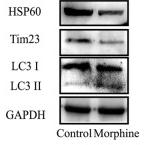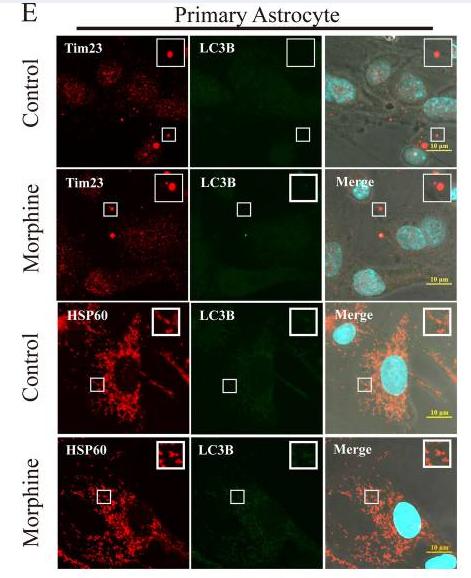Tim23 Antibody - #DF12052
| Product: | Tim23 Antibody |
| Catalog: | DF12052 |
| Description: | Rabbit polyclonal antibody to Tim23 |
| Application: | WB IHC |
| Reactivity: | Human, Mouse, Rat |
| Prediction: | Zebrafish, Bovine, Horse, Xenopus |
| Mol.Wt.: | 22 kDa; 22kD(Calculated). |
| Uniprot: | O14925 |
| RRID: | AB_2844857 |
Related Downloads
Protocols
Product Info
*The optimal dilutions should be determined by the end user.
*Tips:
WB: For western blot detection of denatured protein samples. IHC: For immunohistochemical detection of paraffin sections (IHC-p) or frozen sections (IHC-f) of tissue samples. IF/ICC: For immunofluorescence detection of cell samples. ELISA(peptide): For ELISA detection of antigenic peptide.
Cite Format: Affinity Biosciences Cat# DF12052, RRID:AB_2844857.
Fold/Unfold
MGC22767; MGC93478; Mitochondrial import inner membrane translocase subunit Tim23; Predicted protein of HQ1197; PRO1197; TIM23; TIMM 23; TIMM23; Translocase of inner mitochondrial membrane 23 (yeast) homolog; Translocase of inner mitochondrial membrane 23 homolog (yeast); Translocase of inner mitochondrial membrane 23 homolog B; Translocation of mitochondrial precursor proteins;
Immunogens
- O14925 TIM23_HUMAN:
- Protein BLAST With
- NCBI/
- ExPASy/
- Uniprot
MEGGGGSGNKTTGGLAGFFGAGGAGYSHADLAGVPLTGMNPLSPYLNVDPRYLVQDTDEFILPTGANKTRGRFELAFFTIGGCCMTGAAFGAMNGLRLGLKETQNMAWSKPRNVQILNMVTRQGALWANTLGSLALLYSAFGVIIEKTRGAEDDLNTVAAGTMTGMLYKCTGGLRGIARGGLTGLTLTSLYALYNNWEHMKGSLLQQSL
Predictions
Score>80(red) has high confidence and is suggested to be used for WB detection. *The prediction model is mainly based on the alignment of immunogen sequences, the results are for reference only, not as the basis of quality assurance.
High(score>80) Medium(80>score>50) Low(score<50) No confidence
PTMs - O14925 As Substrate
| Site | PTM Type | Enzyme | Source |
|---|---|---|---|
| M1 | Acetylation | Uniprot | |
| K68 | Ubiquitination | Uniprot | |
| K101 | Ubiquitination | Uniprot | |
| T164 | Phosphorylation | Uniprot | |
| Y168 | Phosphorylation | Uniprot |
Research Backgrounds
Essential component of the TIM23 complex, a complex that mediates the translocation of transit peptide-containing proteins across the mitochondrial inner membrane.
Mitochondrion inner membrane>Multi-pass membrane protein.
Component of the TIM23 complex at least composed of TIMM23, TIMM17 (TIMM17A or TIMM17B) and TIMM50; within this complex, directly interacts with TIMM50. The complex interacts with the TIMM44 component of the PAM complex and with DNAJC15.
Belongs to the Tim17/Tim22/Tim23 family.
References
Application: WB Species: Mice Sample: BV2 cells
Application: IF/ICC Species: Mice Sample: primary astrocyte
Restrictive clause
Affinity Biosciences tests all products strictly. Citations are provided as a resource for additional applications that have not been validated by Affinity Biosciences. Please choose the appropriate format for each application and consult Materials and Methods sections for additional details about the use of any product in these publications.
For Research Use Only.
Not for use in diagnostic or therapeutic procedures. Not for resale. Not for distribution without written consent. Affinity Biosciences will not be held responsible for patent infringement or other violations that may occur with the use of our products. Affinity Biosciences, Affinity Biosciences Logo and all other trademarks are the property of Affinity Biosciences LTD.


